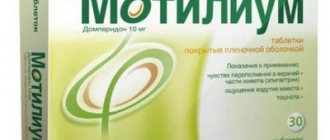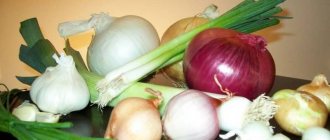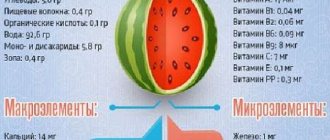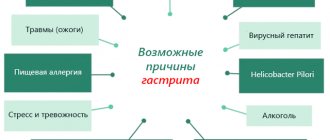- September 9, 2018
- Gastroenterology
- Legina Marina
Only the laziest have never heard of the benefits of legumes. This is practically an analogue of meat, but only of plant origin. The most accessible and inexpensive representative of its family is the pea. This is a healthy and nutritious product that can be an excellent source of protein for vegetarians, as well as those who are on a strict fast. The calorie content of peas is very small. The most important amino acids and fiber, dietary fiber and vitamins, minerals included in its composition make this product the best gift of nature.
But some diseases impose restrictions on our diet. Today we will talk about whether pea soup is okay for gastritis.
Therapeutic diet
The first thing a gastroenterologist does after making a diagnosis is to prescribe a special table that excludes foods that are difficult for digestion. But a person wants his table to remain varied and tasty. Therefore, patients are often interested in whether pea soup can be used for gastritis. Let's figure it out together.
All stomach diseases are associated with disruption of the rest of the gastrointestinal tract. This often involves the liver and intestines, bile ducts and pancreas. As a result, one of the symptoms will be bowel dysfunction. The answer to the question whether you can have pea soup for gastritis will be your individual reaction to legumes. If usually the use of this product caused severe bloating, accompanied by pain, then during illness it will be even more necessary to choose something more gentle.
Effect on the stomach
Digesting legumes is hard work for the stomach. In addition, in the process of this, flatulence occurs. With gastritis, patients already complain of heaviness and pain, and after such a meal the symptoms will only intensify. Therefore, any gastroenterologist can easily answer whether pea soup is okay for gastritis. During the period of exacerbation of the disease, it is definitely not, but during remission, focus on individual sensations. If the soup you eat does not lead to stomach turmoil and pain, then you can delight yourself with a delicious dish.
What to replace
Despite the restrictions put forward above, soups should be included in the diet every day. The first course should definitely be included in the lunch meal, but in the evening it will also become a nutritious and very tasty option. However, pea soup for gastritis is completely excluded. From nutrition, especially during an exacerbation, the most careful attitude towards the gastric mucosa is required. Therefore, the base should be chicken or vegetable broth. All ingredients must be pureed until smooth.
The ideal choice would be oatmeal soup. That is, your task is to make sure that with the shortest and simplest process of digesting food, the body receives the maximum of useful substances.
Peas for patients with gastritis
People suffering from inflammation of the gastric mucosa are wondering whether it is possible to eat peas with gastritis. The answer from experts is that the product is not prohibited, but it must be used with caution. Everyone has experienced the effect of pea grains on digestion, because when they enter the stomach and intestines, they produce a fermentation effect. What will this lead to and how to avoid unpleasant consequences?
For patients with gastritis, important properties are the effect on the gastrointestinal tract. Plant protein promotes the healing of the stomach walls and the regeneration of mucosal tissue. Dietary fiber speeds up the passage of food, removes waste and toxins from the gastrointestinal tract, and prevents the formation of fat cells on the organs of the digestive tract. In terms of nutritional value, peas are equal to meat. Vegetarians fill the body's need for protein with it.
Patients suffering from gastritis are prescribed a strict diet. It excludes foods that cause increased flatulence. Plant proteins are difficult to digest components, so it is difficult for a sick stomach to cope with them.
If the disease relapses, peas should be eaten in moderation; they should be prepared according to the recommendations of nutritionists
An accumulation of gases forms, which causes noticeable pain. This symptomatology is especially characteristic of the exacerbation phase of the pathology. Therefore, if the disease relapses, peas should be eaten in moderation; they should be prepared according to the recommendations of nutritionists.
Industrially canned green peas are dangerous for gastritis, since the marinade contains additional acidity. When consumed, the environment in the stomach becomes aggressive, which provokes the onset of the acute phase of the disease. Green peas should be frozen fresh, and then prepared from them in various dishes and salads.
Pea soup for gastritis
Pea soup for gastritis can be eaten no more than once or twice a week. At the same time, it is advisable to cook it in pumpkin vegetable broth. Gastroenterologists note that the combination of these two products is beneficial for the gastric mucosa and cleansing of the gastrointestinal tract. With high acidity, pea dishes on the table should be rare, since gas formation leads to stomach pain.
Contraindications to the use of peas are exacerbation of the disease, erosive gastritis, ulcers, duodenum. For these ailments, it is better to cook oatmeal and rice broth. Older people need to be careful; active fermentation causes a lot of inconvenience due to flatulence.
Pea porridge for gastritis recipe
Pea porridge for gastritis is an irreplaceable tasty and nutritious dish recommended by gastroenterologists.
Pea porridge for gastritis is an irreplaceable tasty and nutritious dish recommended by gastroenterologists. But in order to preserve all the medicinal properties of peas as much as possible, you should know the features of proper preparation of porridge. First of all, you need to carefully sort out the peas, getting rid of spoiled fruits. Then rinse well and soak in water. Cook pea porridge in the same water; the container must have thick walls so that the porridge cooks evenly.
Next, you need to wait until it boils, then cook over low heat for at least forty minutes. Moderate addition of salt to taste is allowed. You need to stir the contents of the pan thoroughly, because the porridge can burn quickly. Once the consistency has reached a puree-like appearance, you can be sure that the dish is ready. The thickness is easily adjusted using the usual masher or blender; with their help, you can make a thinner porridge.
To diversify the menu, experiment with the ingredients that are added to the finished dish. The simplest recipe is to add 10 grams of butter and stewed, finely chopped onion. It is useful to add meat broths, for example, chicken or beef, to the porridge. This will add nutritional value, change the taste of the porridge and improve the condition of the stomach.
People suffering from excess weight can replace meat broth with vegetable broth; this will also dilute the boring recipe, and properly selected vegetables (zucchini, pumpkin, cauliflower) will improve the functioning of the intestines, which will give a feeling of relief and relieve the feeling of heaviness in the stomach and flatulence.
If you can't, but really want to
Despite the fact that peas are quite harmful for gastrointestinal diseases, this vegetable crop is rich in protein and microelements, which it is fundamentally wrong to deprive the body of, especially during the recovery period. Moreover, peas are an important source of vitamin B1 and zinc, as well as protein, of which there is a lot in it.
You can have pea soup for gastritis only during the period of remission. Therefore, the first thing you need to do is consult a doctor, undergo examination and treatment, and only then, when the improvement in the condition becomes obvious, you can periodically consume a small amount of peas.
Are green peas allowed for gastritis?
Is it possible to eat green peas for gastritis? It is worth remembering that it contains vegetable proteins, which are very difficult to digest in the human stomach. In addition, they can cause the accumulation of gases and flatulence, which in turn is accompanied by severe pain.
for chronic gastritis, only green peas are eaten
It is not surprising that against the background of an exacerbation, green peas with gastritis definitely cannot be eaten.
But for chronic gastritis, only green peas are eaten. After all, any dish prepared with dried peas, including soups or cereals, can provoke the development of an exacerbation. One way or another, peas are a legume that acts as a source of Vitamin B1 and zinc for the human body. In addition, green peas are characterized by a high concentration of magnesium, protein, and fiber.
Green peas also contain fiber. It helps remove toxins from the human body, and also helps in cases of constipation and simply reduces cholesterol in the blood. If you look in detail at the amino acids contained in green peas, you will notice a high percentage of their presence. Moreover, they are entrusted with the most important function: they have a rejuvenating effect on the body.
Among other things, the biologically active substances present in green peas help strengthen the nervous system and improve health. Cellular metabolism and even brain function. That is, you can eat green peas with gastritis, but with caution. After all, he has both negative and positive qualities.
In particular, it contains a lot of magnesium nucleic acids, which is why soups made from fresh green peas are so useful for gastritis. It is still advisable to consult your doctor about this. After all, only he knows the characteristics of the patient’s body and can most accurately predict his reactions.
Choosing a product
In stores, on cereal shelves you can find dried beans, round or chopped, yellow or greenish. Feel free to avoid them. If there is no other choice and you are determined to cook them for lunch, then pre-soak the beans overnight. In the morning, after boiling, drain the first water, then pour in fresh water and you can begin the main preparation. But remember that doctors categorically do not recommend conducting such experiments.
But fresh and green peas are allowed for consumption during the period of remission. It is worth adding that only it contains fiber, which effectively helps with constipation of various etiologies.
Eating peas for chronic gastritis
For chronic gastritis, it is recommended to eat only green peas. Porridges and other dishes prepared with dried peas can cause an exacerbation of the disease. Peas are legumes and are an important source of zinc and vitamin B1, which help strengthen the nervous system. Green peas have a high concentration of magnesium with nucleic acids, a large amount of fiber and protein.
The protein content of peas is 10 times higher than that of potatoes and sausage combined. The fiber found in peas helps remove toxins from the body, reduce cholesterol levels in the blood, and helps with constipation. The nucleic acids contained in peas are somewhat similar in structure to the proteins of molecules that carry genetic information. Cells of plant origin actively divide, providing a high percentage of nucleic acids.
These acids, especially those of plant origin, are extremely important for the functioning of the human body.
For chronic gastritis, it is recommended to eat only green peas
They enhance the regeneration process, thereby having a rejuvenating effect on the entire body. Nucleotides are better absorbed in combination with magnesium, and green peas have exactly this combination. Green peas also contain vitamin A, iron, vitamin B1 (thiamine), B2 (riboflavin), PP (niacin).
Thiamine, the concentration of which in green peas is quite high, has a beneficial effect on the functioning of the nervous system: it ensures the coordinated interaction of all nerve nodes, thereby helping a person acquire a balanced, calm mood. Riboflavin provides cells with the necessary energy and helps improve skin condition.
Niacin stabilizes the functioning of the cardiovascular system. Among other things, the biologically active substances of green peas strengthen the nervous system, improve brain function, activate cellular metabolism, reduce the level of fats in the blood, improve vision, remove toxins from the stomach and eliminate constipation.
Green peas have a sweetish taste and quickly fill you up (due to the protein present in them). It can be eaten fresh or stewed. It does not take long to simmer, since prolonged heating destroys vitamins and minerals. In case of chronic gastritis, the intake of green peas in food is somewhat limited, since due to the high concentration of the nutrients contained in it, it is difficult for the sick stomach to absorb.
Good recipe
When the period of exacerbation is behind you, you can fulfill your old dreams and prepare a tasty and healthy soup. All dietary recipes that were developed specifically for patients with gastritis have approximately the same preparation rules. The basis is always a light broth from which the fat has been completely removed. This is done simply. Boil a piece of chicken or veal and leave the broth to cool completely in the refrigerator. Now you can easily collect and remove the film on the surface.
So, the filler will be green peas. It is added at the very end of cooking, and first you need to grind it to a paste. And salt is added before turning off in a small amount.
Energy composition of peas.
First of all, it is important to clarify that pea fruits are divided into two subgroups:
- Peeling.
- Sugar.
They are classified depending on their shape and degree of hardness. Beans of the first category have a parchment layer, which ensures the hardness of the fruit. These peas are used for preservation. The second subgroup is characterized by the softness of the seeds and is excellent for cooking.
Pea beans contain vital components such as:
- Beta carotene.
- Vitamin B complex.
- Choline.
- Vitamins E, PP, A, H.
- Calcium.
- Magnesium.
- Sodium.
- Chlorine.
- Iron.
- Cobalt.
- Phosphorus.
- Zinc.
- Manganese.
- Cellulose.
- Starch.
- Monosaccharides, disaccharides.
- Water.
Among other things, plant seeds include a combination of simple and complex carbohydrates, a balanced amount of proteins and fats, healthy sugars and mineral salts.
Increased acidity is a threat to the mucous membranes
A high concentration of hydrochloric acid puts the gastric mucosa at risk. Therefore, the diet should exclude chemical or mechanical irritation of the gastric mucosa. The main goal is to reduce the concentration of gastric juice. To do this, exclude all products that contribute to its excessive formation. This is primarily fresh bread and baked goods, barley and legumes. Therefore, pea soup for gastritis with high acidity should be completely avoided. If we are talking about a disease that occurs in a chronic form, then it is quite possible that this restriction will be observed for life.
When does an ulcer develop?
If time is lost and erosive processes on the mucous membrane are observed, then much more effort will be required to heal. A stomach ulcer requires quite a long period of adherence to a gentle diet and intensive drug therapy. The doctor will select medications for you and give you nutritional recommendations. Usually, during treatment, the patient is completely transferred to pureed food, pureed soups and liquid porridges.
The right consistency of pea soup immediately comes to mind. It is unacceptable for gastritis and stomach ulcers. Even when cooked and mashed, peas can provoke an exacerbation of the disease and lead to the activation of fermentation processes in the stomach and intestines, which will result in extremely negative consequences. That is, in case of peptic ulcer disease, it is not recommended to eat beans even during the period of remission.
We are looking for a compromise between gastritis and pea soup
Patients suffering from stomach ulcers and gastritis should not even come close to legumes. This includes peas and beans, lentils, and any types of beans. Especially during an exacerbation, the prepared dish will only aggravate the situation.
But why are peas, and other legumes, strictly prohibited? They consist of proteins of plant origin, which are difficult and long enough for our body to digest. In simple words, any pea dishes put a lot of strain on the gastrointestinal tract and are considered heavy food.
If you violate the doctor’s instructions and eat a little soup, at best the patient will experience flatulence and accumulation of gases. They are undesirable during inflammatory processes occurring in the stomach. The pain will only get worse.











